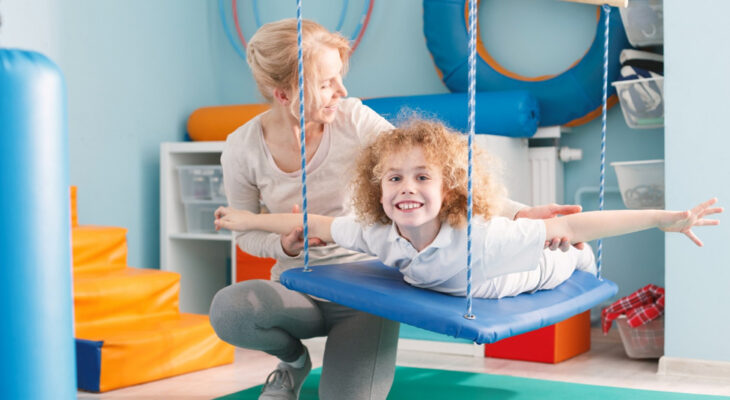VRT, or vestibular rehab therapy, aims at treating disorders related to the vestibular system, which is responsible for maintaining our balance and spatial orientation. Vertebrates have sensory structures that include the inner ear and specific regions of the brain that work together to process information related to movement and gravity. You can read more about the system on this page here.
Trained therapists will assess your unique condition and develop an individualized treatment plan tailored for you if you decide to go to therapy. Exercises and techniques designed to improve coordination, strengthen muscles involved in balance, promote visual stability, and enhance overall tolerance for motion will also be observed, while you’re in one of these programs.
Patients may set goals that they want to see at the end of the program where they expect to alleviate symptoms such as dizziness or vertigo. Others also want to restore functional independence and enhance the quality of their lives. Whether you’re experiencing symptoms due to a peripheral vestibular disorder like benign paroxysmal positional vertigo or a central nervous system issue like migraines or stroke-related deficits, this therapy can be beneficial for you to function well.
While many individuals with vestibular disorders can benefit from this type of therapy, it might not be suitable for everyone. Consulting with a healthcare professional specializing in these conditions is crucial in determining if you are an appropriate candidate for rehab.
What’s Involved in the Program?

Thorough assessments are done by a trained otolaryngologist or neurologist who specializes in rehabilitation. Medical professionals will first evaluate the individual’s symptoms, and medical history, and perform various tests to determine the underlying cause of the problem. They will first rule out any potential health conditions like a brain tumor, stroke, or migraines, and they are going to perform MRI with dye to have more accurate findings.
Based on the check-ups, a customized treatment plan is developed, where it would typically include exercises, and techniques aimed at improving balance, and coordination. Dizziness and balance go hand in hand, and the former can happen when there’s something that can affect your spatial orientation or your other senses. It’s the brain calculating your current position based on your environment. If you feel lightheaded or woozy, you might have probably lost your sense of balance.
Sensory systems may include the labyrinth in your ear including the otolith organs that react to movement and gravity, as well as the semicircular canals that react every time you turn your head. The eyes are going to send messages to the brain to show where you are about the objects around you. When these actions fail, then you might be in trouble.
Gaze stabilization exercises that are part of the program may involve tracking moving objects or focusing on specific points while moving your head in different directions. Its goal is to retrain your brain to rely more on visual cues for balance instead of relying solely on your inner ear. Habituation exercises may also be helpful when you get repeated exposure to movements or positions that provoke symptoms intending to desensitize your body’s response over time.
It’s important to note that each person’s journey through vestibular rehabilitation will be unique based on their specific condition and needs. Progress can vary depending on factors like the severity of symptoms and consistency with therapy sessions.
Benefits to Know About
1. Reduced Vertigo and Dizziness: Eliminate most of your headaches and symptoms and go back to functioning normally in your daily life with the right programs.
2. Improved Stability: Balance and being stable can be addressed by the right therapists, and significantly reduce your chances of falling or getting into an accident.
3. Decreased Depression: Lessen your anxiety about living with chronic dizziness by improving every day. Even if it’s not going to be an overnight success, you can still avoid depression by an improved well-being and mood.
4. Be More Independent: Do what you love, such as gardening, reading, and cleaning without the assistance of your loved ones.
5. Better Concentration: Researchers have found out that rehab can have the chance to improve the attention span of the patients as well as their cognitive brains.
6. Faster Recovery from Concussions: Accidents may happen, but you can get a speedy healing from a head injury if you rely on the right experts.
7. Sleep Better: Not disrupting your sleep patterns can improve the quality of your rest, and this is where the best programs can prevent disturbances during the night. This can lead to a healthier body and a sound mind.
Things to Expect

At the start, the therapist will check more of your balance to determine the underlying cause of your symptoms. They may also use specialized tests such as videonystagmography or computerized dynamic posturography to gather more information about your condition. Learn info about CDP at this link: https://www.sciencedirect.com/topics/medicine-and-dentistry/posturography.
Expect regular follow-up appointments with the healthcare specialist to monitor progress and make any necessary adjustments to your treatment plan. It’s worth noting that this is a gradual process that requires consistency and patience, and you might not see immediate results. But with patience and the right support from the medical experts, you will be able to achieve your goals and live happier. Throughout the sessions, it’s essential to communicate openly with your therapist about any changes in symptoms or concerns you may have.





